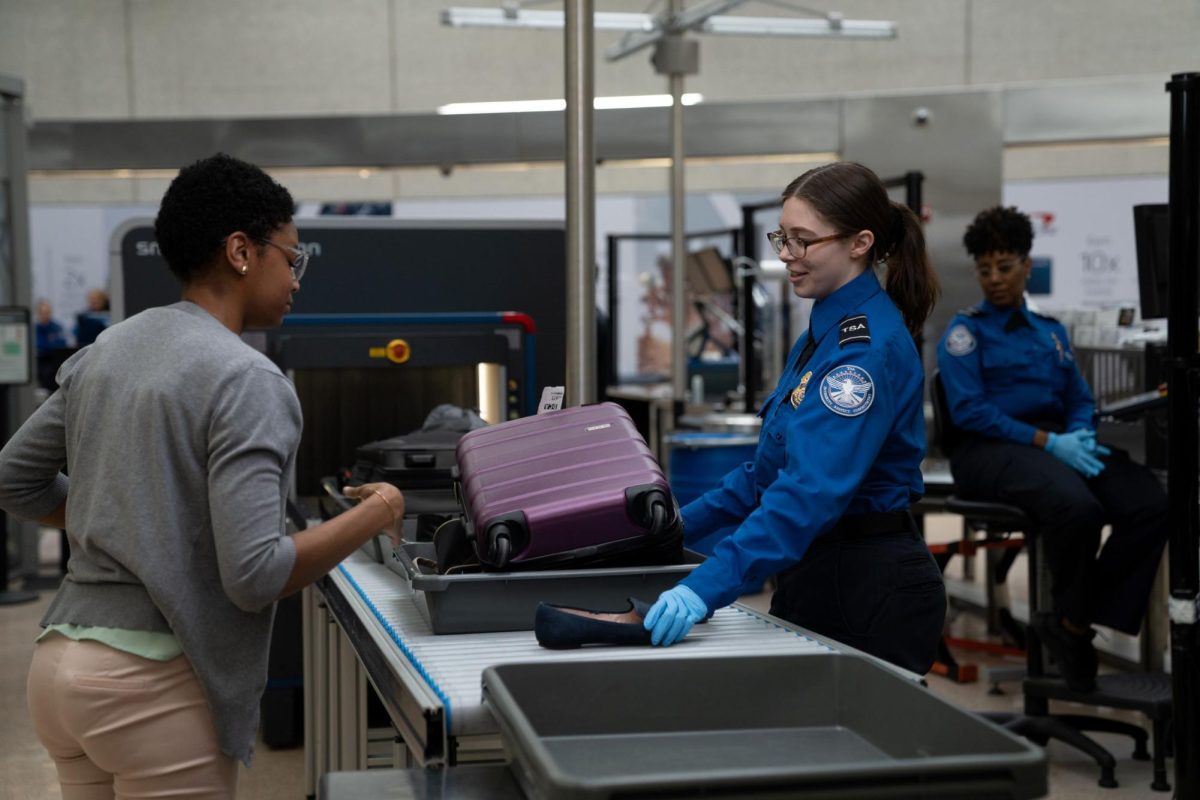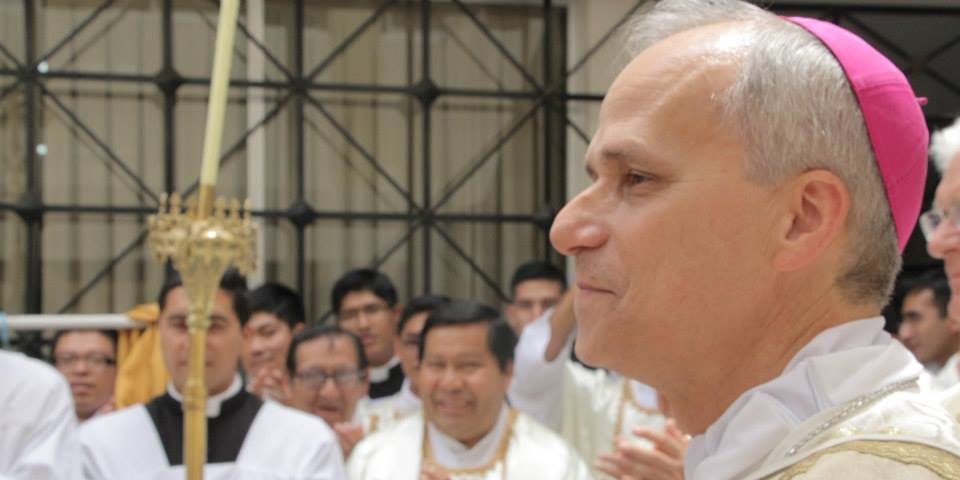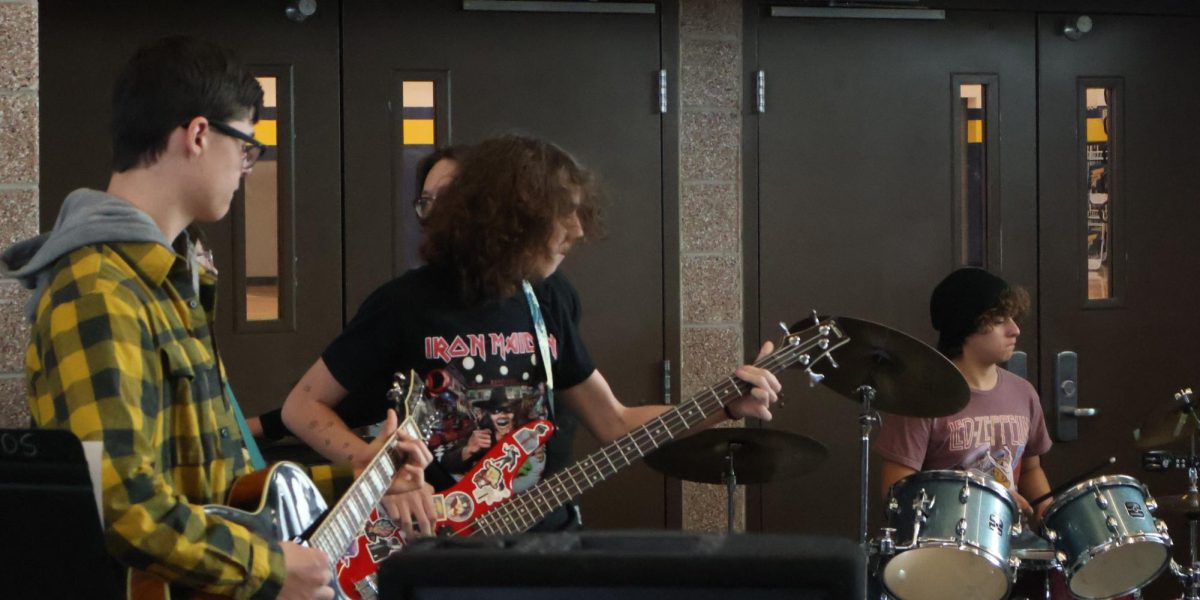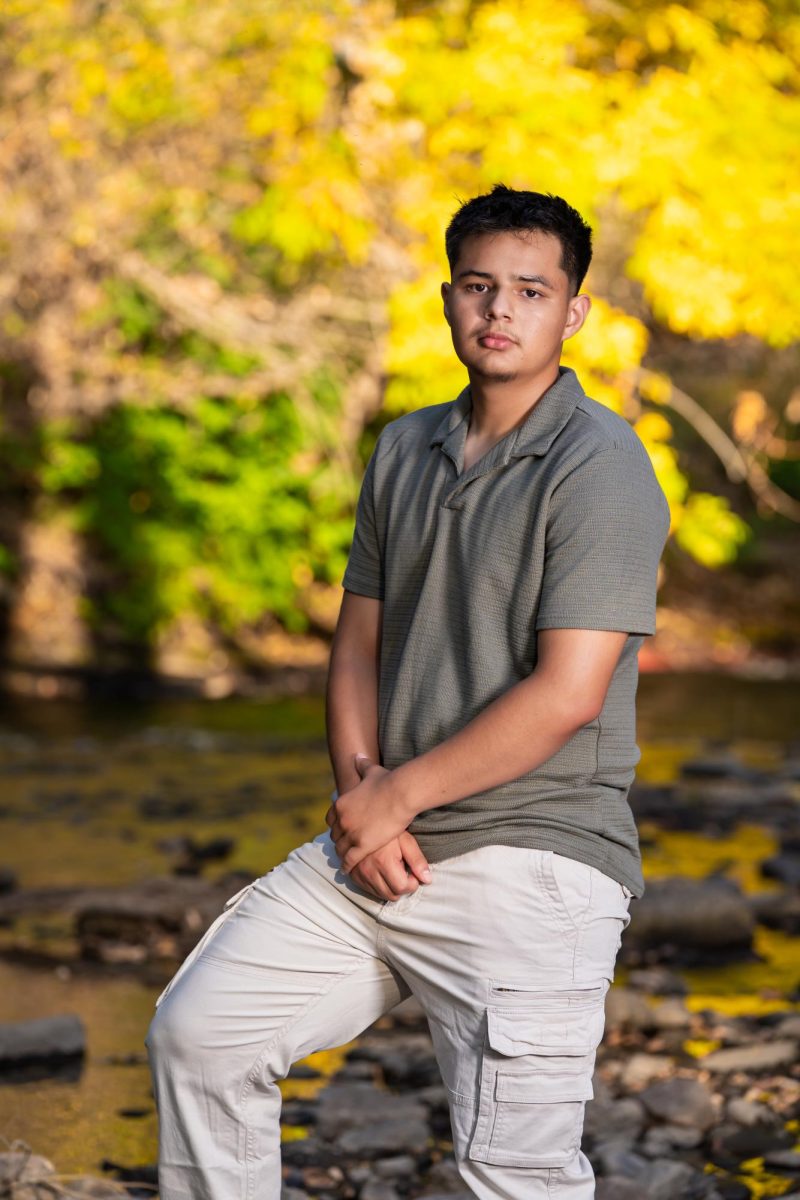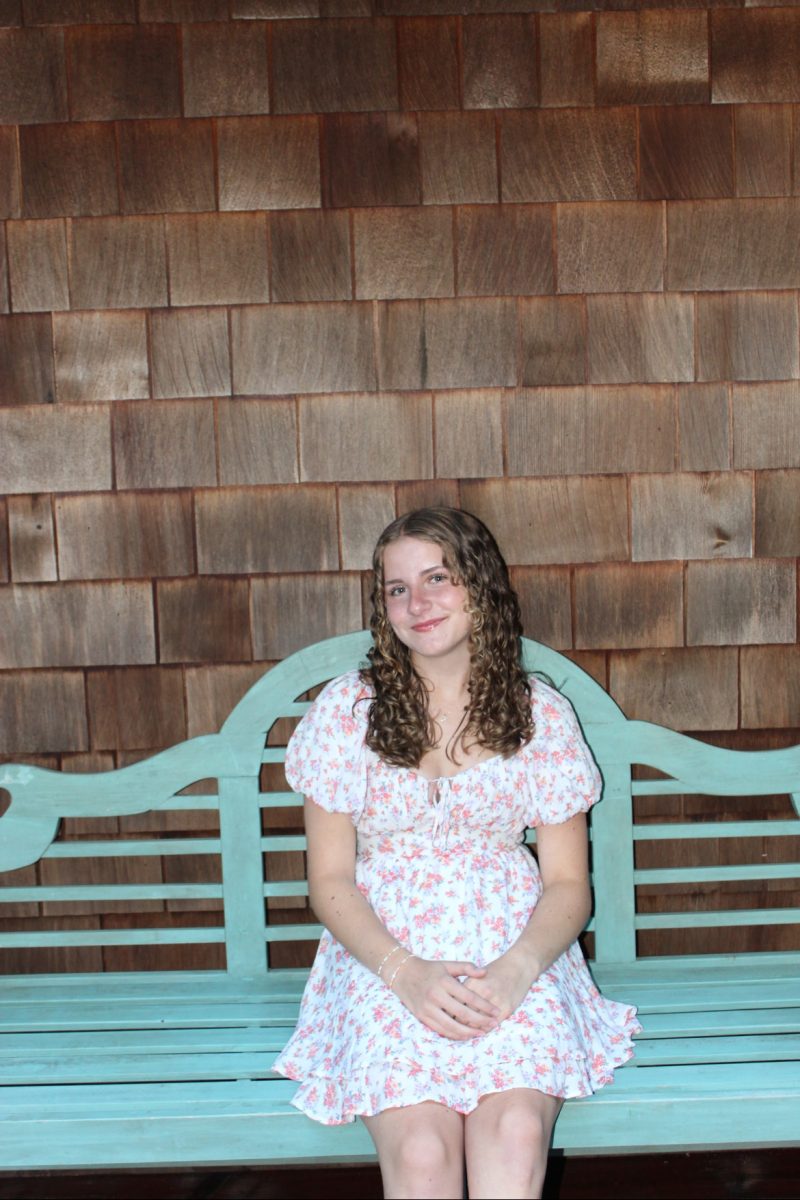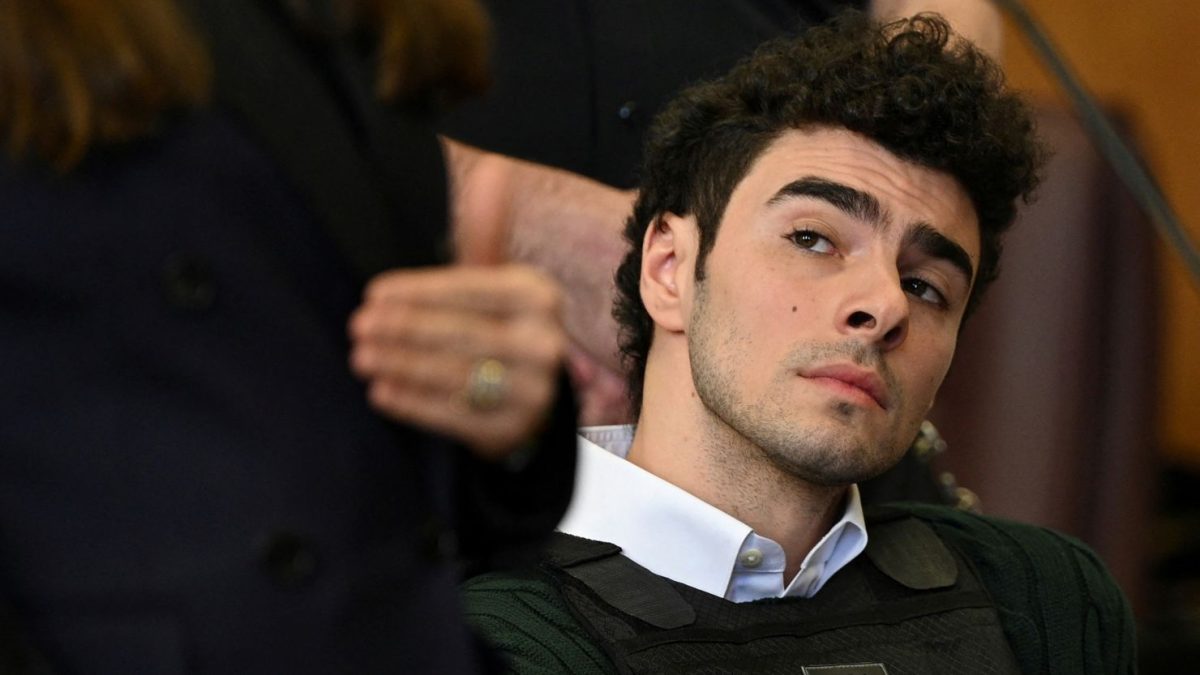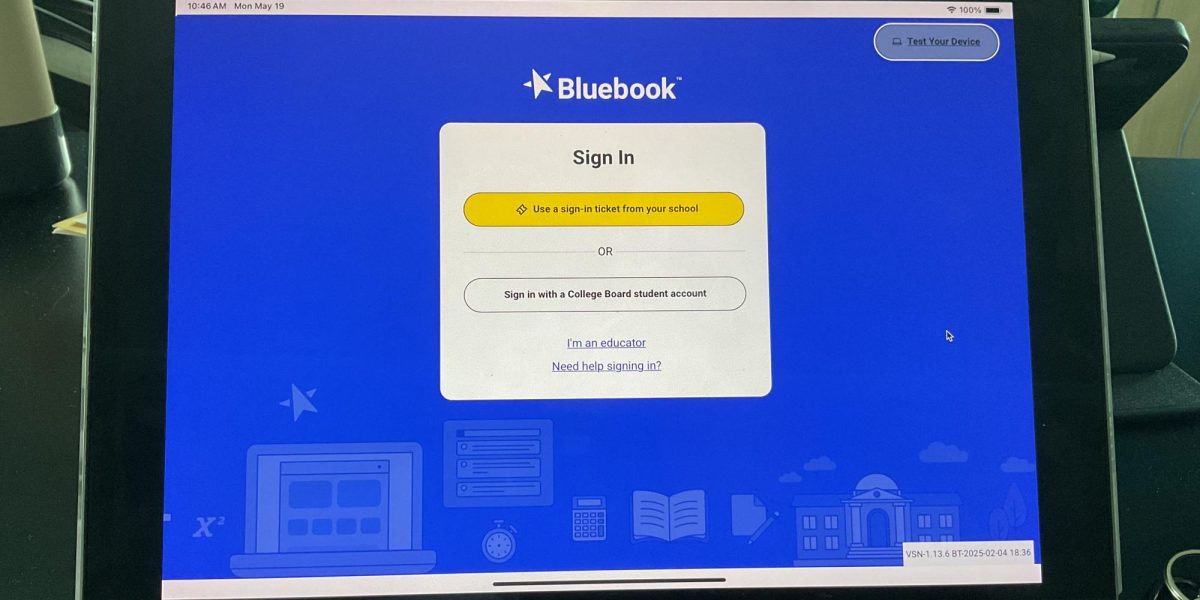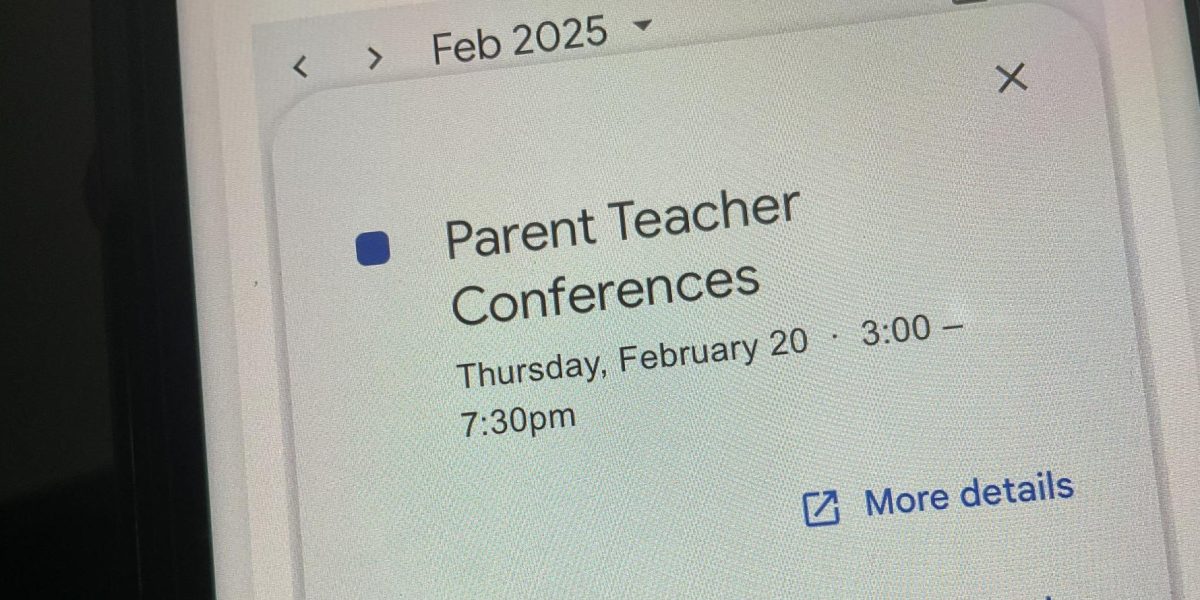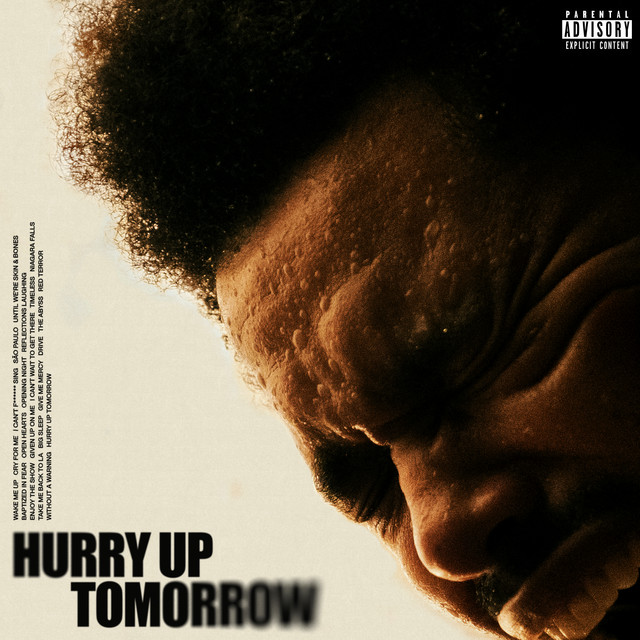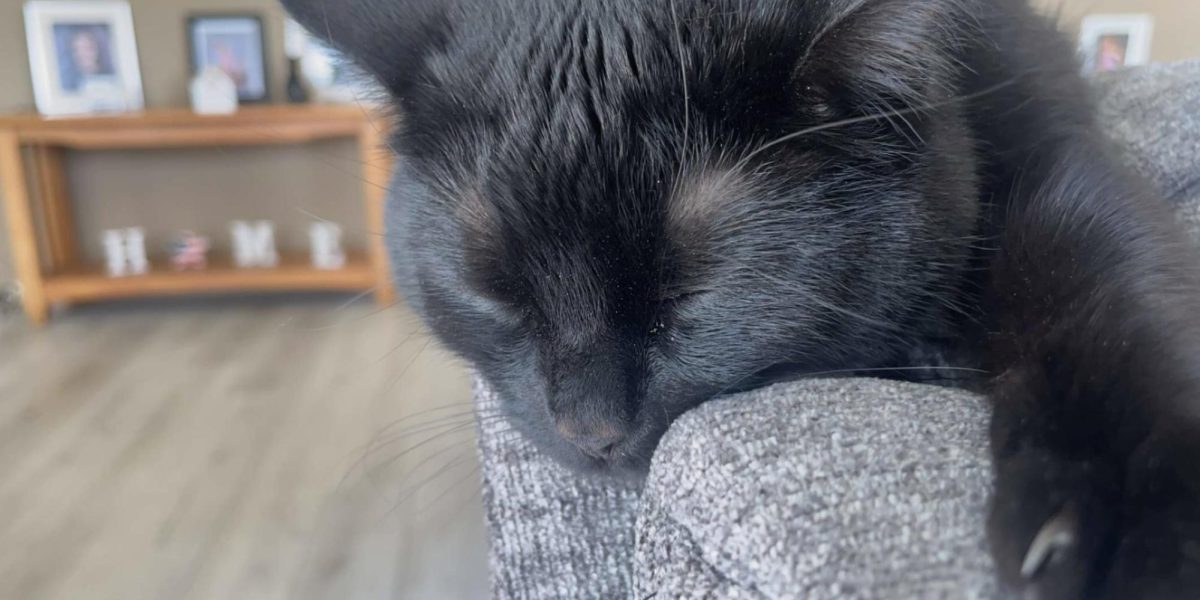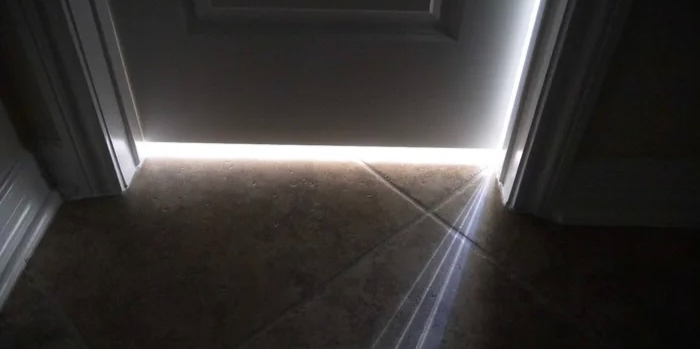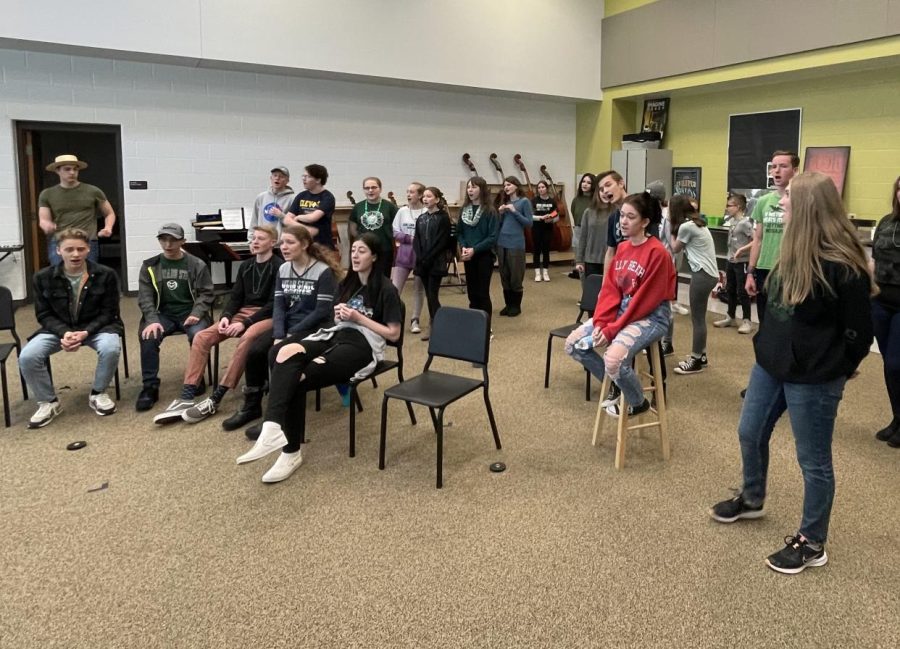Sitting through the Sitzprobe
Frederick Theatre students singing about being “Iowa Stubborn” during the Music Man sitzprobe. While (according to Mr. Brown) the show will be around two hours long, the sitzprobe lasted from 1:30 to 6:00. “That’s how much time it takes to tighten everything up between the singers and the musicians.”
March 22, 2022
One of the most difficult performances a theatre department can pull off is a musical. Not only do students have to master acting and a set has to be built, like a normal play, but there’re also singers, dancers, and an orchestra. And Frederick Theatre puts on a musical every year, even during the pandemic of the past two years.
What makes a musical more difficult isn’t that there are so many more people involved but that all of the extra elements must work together, which is why all the pieces of the puzzle get their own rehearsal. Technicians that run the lights and sound get a technical rehearsal. Costumers and makeup artists get a costume parade. As for the orchestra, they get a stizprobe.
“Basically, the sitzprobe is where it’s like our first big combination of combining the vocals and the pit,” says senior pit musician Sarah Allred. “We’ve been able to rehearse beforehand, but this is the first time where we’re running through all of the songs all at once.”
Frederick held its sitzprobe on Thursday, March 17 this year, with actors and musicians decked out in St. Patrick’s green. While Frederick Theatre has been working on casting roles and putting together the choreography since December and the orchestra has been working on the musical portion since January, they do so independently until the sitzprobe. This is also the first time all three directors–vocal director Mr. Kevin Brown, music director Mr. Kyle Liss, and artistic director Mr. Brandon Coon.
“It’s kind of a big deal,” according to senior pit member Levi Friss. “It’s when everything starts to come together. It’s when you really get a feel for how all of the elements are going to work together and the overall vibe of the piece.”

This year’s musical is The Music Man by Merideth Wilson. The show is about con artist Harold Hill who pretends to start bands for children, gets a town to invest, and then takes the money and runs. However, he finds that to trick the people of River City, Iowa, he’ll need to avoid the cynical mayor and his cronies and get the local piano teacher, Marian Paroo, on his side. It was originally made in 1957 but the cast thinks that they can bring a modern sensibility to the material.
“It’s a really fun show, and it gives us something that we haven’t gotten to do before. It’s a lot of fun and very different,” according to senior Thomas Beeker who plays Harold Hill in the musical. Donning his straw hat, Beeker sings in about half the songs in the musical. “The sitzprobe is my favorite part of the process because we finally get to see everything come together when we get to combine with the pit.”
But why does a sitzprobe need to happen? After all, there’s a written script and written music–can’t the theatre people go off that without a special rehearsal?
“The sitzprobe is all about the little things,” director Mr. Coon told us. “For some songs, the actors want to go a certain pace and the pit must catch up with them. For others, parts of the music need to be cut or extended to match the action onstage. There are also several songs where the actors stop or start based on the music and the music starts and stops based on the actors–the sitzprobe allows us to clean up all of those details at one time.”
Covering all the songs in a musical in a single rehearsal can be exhausting. The sitzprobe started at 1:30 during the A4 Musical Theatre class and ended around 6. This makes for a long day for everyone.
“The hardest part about the sitzprobe is trying not to get burned out. We’re here every day for almost 12 hours, and I think it’s hard on some people having rehearsals after class. The sitzprobe is like a super version of that. But we’re pushing through,” said Beeker.
Still, the sitzprobe marks when the musical kicks into high gear, and despite the length of the rehearsal and the hard work required, the cast and pit ended the rehearsal with applause and a week-long spring break.
Sophomore Emery Ishmael, who plays Mother Paroo in the show, said it best: “[The sitzprobe] is like the first time we get the full experience with the orchestra and the actors performing together. It’s like a rough draft of the show, and it’s so nice to see months of rehearsal start to come together.”



